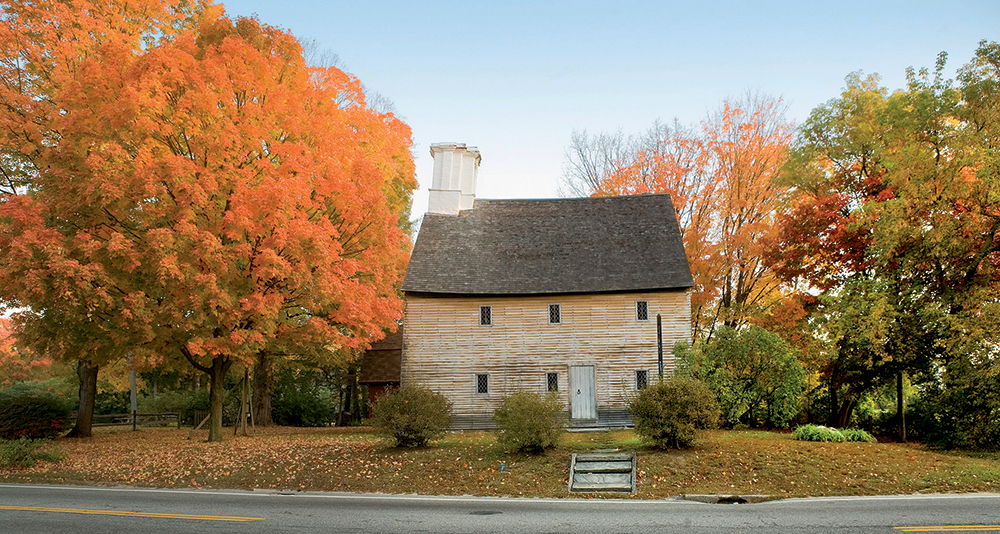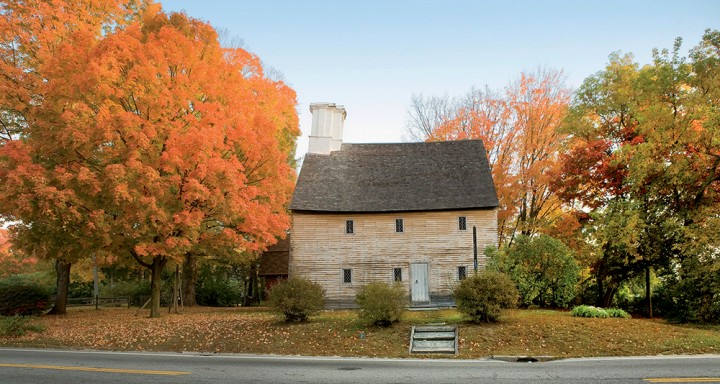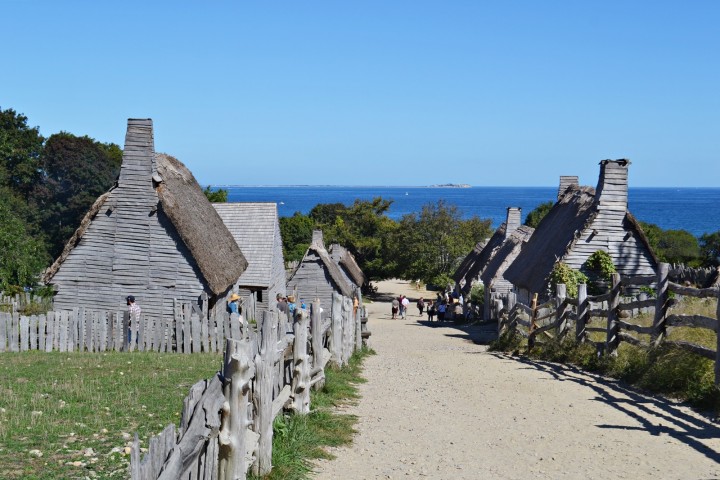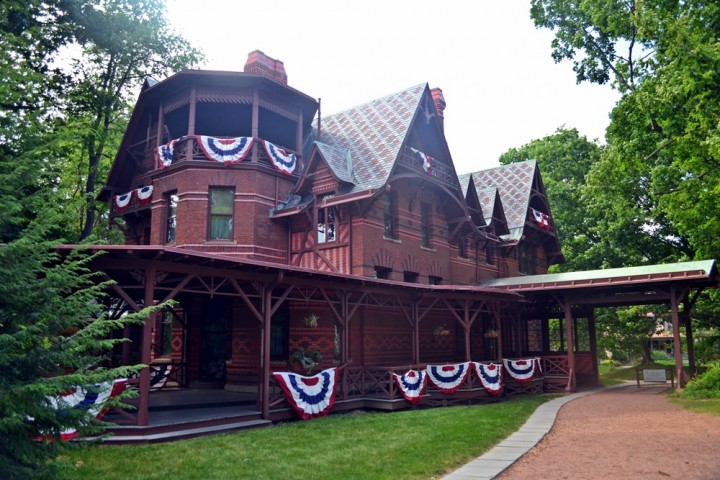Magazine
5 Best Historic House Museums in New England
We asked architectural writer and longtime New England resident William Morgan to share his choices for the 5 best historic house museums in New England.

Coffee By Design | Portland, Maine
Photo Credit : Katherine Keenan
Photo Credit : Richard Benjamin
5 BEST HISTORIC HOUSE MUSEUMS IN NEW ENGLAND
Eleazer Arnold House: 1685
This is still a medieval-style house, with its tall proportions, massive Elizabethan chimney, and stone end wall, unique to Rhode Island. (Stone houses were rare in early New England.) But this substantial home shows how far the colonists had moved from basic shelter. As a successful farmer and politico, Arnold could afford a house with six rooms. The Arnold House was restored by Norman Isham in 1920, and again in 1950 by the Society for the Preservation of New England Antiquities (now Historic New England). Both conservation efforts were undertaken to maintain the Arnold House’s unusual early character. Lincoln, RI. 401-728-9696; historicnewengland.orgWentworth–Gardner House: 1760
This wooden house—fashioned to look like stone—overlooking New Hampshire’s Portsmouth Harbor demonstrates how elegant and stylish houses had become by the mid-18th century. Yet this accomplished Georgian mansion was almost lost; it was acquired by antiquarian Wallace Nutting, who sold it to the Metropolitan Museum of Art in New York. The Depression foiled the scheme to move the house to Central Park, and thus the Wentworth–Gardner survives in its timeless waterfront setting. Portsmouth, NH. 603-436-4406; wentworthlear.org
Photo Credit : Aimee Tucker
Plimoth Plantation: 1627
The reconstruction of the Pilgrims’ dwellings at Plimoth Plantation serves as a reminder of just how difficult the early days of settlement were. One meager room, a thatched roof, a wooden chimney, and mere slits for windows made for tough living. Plimoth’s houses echo the cottages the settlers knew back home in eastern England, but they quickly had to be modified to survive Massachusetts’ rigorous climate. Although it was a small village, there was a sense of community, a trait that helped the Pilgrims to endure. Plymouth, MA. 508-746-1622; plimoth.orgOlson House: Late 1700s–1871
The Olson house is a quintessential saltwater Maine farm. Best known as the setting for Andrew Wyeth’s famous painting Christina’s World, the house is now a museum. Visitors may wander through the empty rooms where Wyeth painted many views and portraits during his long friendship with Christina and Alvaro Olson. But more than the pervasive Wyeth legacy (he’s buried here), this unrestored farmhouse informs us with the truth of the isolated, hardscrabble life that was the lot of so many northern New Englanders. Cushing, ME. 207-596-6457; farnsworthmuseum.org/olson-house
Photo Credit : Aimee Seavey








The Adams National Historic Site – the original two colonial salt box houses and the Peacefield mansion in Quincy, MA. And, to boot, a short walk to the Church of the Presidents to see the crypt of John, Abigail, John Quincy and Louisa. I love taking that tour once a year.
My favorite historic Museum House is Nathaniel Green Homestead, Coventry, RI
The Old Manse in Concord, MA, is stellar and very welcoming. The docents and manager love the property as if it were their own! I love it, too!
The Old Manse is wonderful so is Orchard House ( little woman) lots of wonderful old houses and museum’s in my old home town.. And don’t forget Marblehead with many historical and wonderful homes. New England is a special place
Naumkeg, the former Choate residence in Stockbridge, MA
Fabulous site and fabulous gardens as well!
Thank you for these. My family goes back to Governors Wentworth, Curtis, and Shute, John & Priscilla Alden, Longfellow, Clemens, and Melville, i.a. Wonderful resource for showing the great/-grandchildren about our heritage.
The Adams Saltboxes are not original. To much original fabric has been replaced.
The Mount? Paul Revere’s House? Fairbanks House? So many more Why limit it to five?
None of these would make my top 20 list. Even just in Hartford – HB Stowe is a better visitor experience than Mark Twain. Plimoth Plantation (I love it) isn’t a house museum; Wentworth–Gardner House – is cool, but its not even the best Wentworth house museum in Portsmouth – I would say only the 5th best house museum in Portsmouth. The Olson House in Maine – that’s an enlightened choice – but its not top 5 in that state.
The Wentworth-Gardner house has outstanding Georgian interiors with unusually fine carved details – less elaborate than the Gov. Langdon house carvings, but executed with restraint and exquisite taste, and therefore finer in effect.
Since childhood, my favorite house museum is the Longfellow house in Portland, ME. No particular architectural reason; as a child it struck me as a comfortable house with a sweet garden. Additionally, I always loved Longfellow’s poems, especially “The Children’s Hour.” We’d also always visit the Tate house when we visited Longfellow’s, but it never held the same fascination for me as Longfellow’s home did. I loved imagining Longfellow at his desk, penning his poems; it was as if I could reach back through time and touch him. Cherished childhood memories. I took my son there; one day I hope to take my grandchildren.
Love the Moses Mason House with its Rufus Porter murals in my hometown of Bethel, Maine.
i am disappointed not to see The Loring-Greenough House in the Jamaica Plain section of Boston, Built in 1760 by Commodore Joshua Loring, it is a jewel box of portraits & collections; even some original documents exist. During the Revolutionary War, after the Lorings had fled, the House was used as a temporary field hospital; soldiers who died there, surprisingly few, were buried on the grounds & then reinterred on land which is now part of The Arnold Arboretum, just down the road. The House was saved from demolition by The Tuesday Club, founded expressly for this purpose; the Club & its members still offer tours on Sundays between 1:00 p.m. & 3:00 p.m. & the grounds are open for the Farmers Market on Thursday afternoons.
Thanks & hope to see you,
C Connolly-Leary
I would like to add the Fairbanks house in Dedham Ma it is the oldest frame house in America, 1620.
I have toured The Olson House in Cushing,Maine a few times! Andrew Wyeth kept a guest book in the downstairs parlor and it is said that when he was in the area he would walk down there of a night and sometimes read visitor comments that were written there! I was under the understanding that The Oldson House was painstakingly restored to its original condition by Andrew Wyeth and movie Director Levine for the award winning documentary Christina’s World narrated by actress Julie Harris!!
Hildene is my favorite historic house. Love all they do from the beautifully preserved home, to the historical interpretations, to the farm they always strive to educate as well as preserve.
I recommend the Jeremiah Lee Mansion / museums in Marblehead ma.
Echoing another comment: LOTS of historic houses in Portsmouth NH (all allied through Portsmouth Historic Sites) but best of all is Strawbery Banke Museum, a village of houses and their families, 1695-1954.
The Franklin Pierce Homestead State Historic Park is a beautiful home with a wonderful attached barn. Take the tour and ask about Hillsborough’s stone arch bridges and where they can be found. The bridges are one of two National Engineering Landmark award winners in the State of New Hampshire. The other is the Cog Railway.
What about the Fairbanks house in Dedham
You missed a gem – the Golden Ball Tavern Museum in Weston, MA. It is an historic house presented in a unique way. Instead of a restoration to a single period, the house “tells its story” throughout its life. The house was owned by the same family from before the Revolution and research continues on both the house and the family. The grounds have also been the site of archaeological digs which have yielded interesting artifacts displayed in the house.
Leffingwell Inn in Norwichtown, CT
The Uncle Sam house in Mason, NH. Not many people realize he was a real person: Sam Wilson. His story is most fascinating. Would love to see an article in Yankee on his life.
Hi BJ; Yankee Magazine would be very welcome if they wish to make an article about the Uncle Sam’s House in Mason. Have a good week-end, CM
Beauport, Sleeper–McCann House, Gloucester, MA
I vote for the Pownalborough Courthouse in Dresden, Maine! Fabulous location and history.
Orchard House in Concord and the House of the Seven Gables in Salem.
Crosby Mansion in Brewster, MA. Fascinating history, incredible architecture.
The Marston House Museum of the Sandwich NH Historical Society is a wonderful example of old New England life!
Hoxie House in Sandwich Mass has great docents that provide all kinds of interesting information
the Hillstead Museum in Farmington CT is amazing for it’s Impressionist art and it’s architecture.